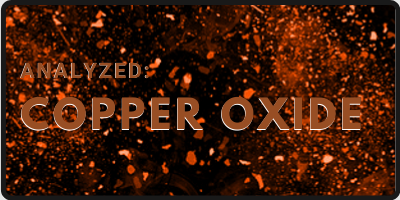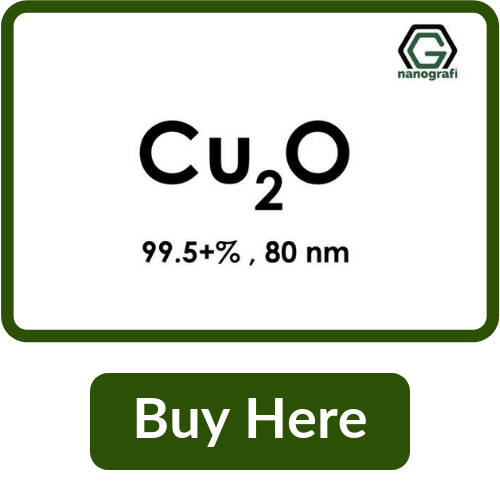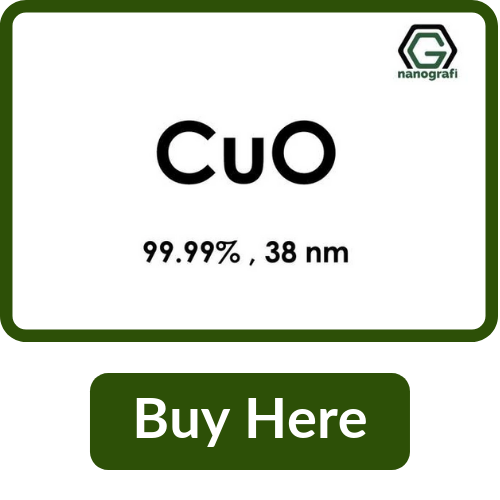Analyzed: Copper Oxide
Copper and Oxygen, when combined, form very interesting materials, including copper oxide (I) and copper oxide (ll), both minerals are found in nature and have special characteristics and particular uses. The copper oxide (II), also known as cupric oxide exists in nature as a component of minerals as tenorite and paramelaconite and extracted minerals around the world, however, there is a process to produce industrially. Copper Oxide is insoluble in water and soluble in ammonia solution. It is a compound that when dissolved in hydrochloric acid, HCuCl 2 is obtained. It has a plethora of applications due to its remarkable characteristics. We will discuss all of such aspects in detail in this article.
Copper Oxide is an important industrial compound. The reason for this is its properties. It has stable physical and chemical properties, high-temperature resistance and lasting effect. It melts above 1200 ° C and it is amphoteric, so it can dissolve in acids and alkaline solutions. It has a small size and no fading, and it can be used for special purposes such as in thin films and ultrafine fibers. Moreover, it has excellent performance, broad-spectrum bactericidal, safe and non-toxic. It belongs to the insoluble antibacterial additive, which has strong washing resistance.
Before discussing the types of Copper Oxide, let’s first get to know about Copper.
What is Copper?
Copper is a reddish metal, which has a very high electrical and thermal conductivity, only surpassed by the thermal conductivity of gold and the electrical conductivity of silver. Copper has a low oxidation state in most of its compounds (+2 is usual). There are also some compounds with the oxidation state of +1. In the presence of air, the initial salmon-red color is converted into violet red color because of the creation of cuprous oxide (Cu2O) and then it blackens itself by the production of cupric oxide (CuO), and continuously exposed to moist air forms an adherent layer carbonate raincoat that is poisonous. It is easily attacked by halogen elements, in the occurrence of moisture, as dry bromine and chlorine have no effect, although fluoride attacks at the temperature higher than 500 °C. Among its mechanical properties, its exceptional deformability and ductility stand out.

Types of Copper Oxide
Oxygen can be combined with copper in diverse ways to produce 2 kinds of compounds: copper oxide (I) that is a reddish powder and copper oxide (II), a black powder. These compounds are also found in nature as minerals, both copper oxides are used in the production of pigments independently, each has different uses.
Copper oxide (I)
This compound, also called cuprous oxide (Cu2O), is found in nature in a mineral called cuprite, although most of the compound used at the industrial level is obtained synthetically. Industrially, it can be formed by heating metallic copper at extreme temperatures or by electrolysis of saline solutions with the help of copper electrodes and by mixing some other copper composites with reducing agents.
Properties of cuprous oxide
CuprousOxide is a red crystalline powder and its melting point is 1232 °C. It oxidizes slowly to copper (II) oxide in a humid air environment. Although it is insoluble in any organic solvent and water, it reacts with strong acids, for example, nitric, sulfuric, and hydrochloric acid to produce salts. It also reacts with strong bases, for example, potassium and sodium hydroxides to produce compounds called cuprates.
Uses of Cuprous Oxide
The main applications of Cuprous Oxide are stated below:
- •It is used as a nutritional supplement in animals.
- •It is also used as a pigment in the production of various kinds of glass and ceramics. This gives them a red color.
- •It was also used to demonstrate the photoelectric effect in which exposure to light generates the flow of electric current. This is the reason it is useful in light detectors and photoelectric cells.
- •Ceramic materials made with copper (I) oxide act as superconductors at high temperatures. Superconductors that don’t require extremely low temperatures to operate are still under investigation.
- •It is used as a nutrient for potato plants.
- •It is included in one of the first discovered semiconductors.
- •This compound is also the active component of many antifouling paints. The importance of antifouling paints, for example, is that when used, ships navigate faster through the water and consume less fuel when the hulls are clean and free of encrusting organisms (algae, crustaceans, molluscs).
- •One of the most important uses of copper (I) oxide is in agriculture. It is an element of several fungicides that are used to protect a wide variety of crops from pests.
- •It is used to produce electrodes and dry batteries.
Copper Oxide (II)
It is also called cupric oxide (CuO), which exists in nature in the form of a black or gray mineral called tenorite. It exists in black solid form and its melting temperature is higher than 1200 °C. Copper (II) oxide is largely insoluble in solvents but it can react with acids to form copper salts.
Like cuprous oxide, copper (II) oxide can be manufactured by heating elemental (metallic) copper but at lower temperatures. This method of production generates an impure form of the oxide; however, there are alternative ways of obtaining, for example, by heating some oxygen-containing copper compounds such as carbonate, hydroxide or nitrate.
Uses of Cupric Oxide
The cupric oxide is a product used in different applications, a few of them are:
- •Copper (II) oxide is occasionally used to rinse the glass.
- •It is used as a solvent of chromic iron minerals.
- •Various colors, including blue, green, red can be produced from it.
- •It is used to pigment crystals or ceramic dye.
- •It is used as an insecticide and fumigant due to its fungicidal and microbicidal properties.
- •It is a precursor to make rayon.
- •It is also used as an abrasive to polish optical equipment.
- •It is used as a desulfurizing agent for petroleum gases and oils.
- •Another use that has been given to copper (II) oxide is to administer it orally in the form of needles or capsules of copper oxide wire to sheep and goats to control the gastrointestinal worms of cattle.
Copper Oxide Nanoparticles
Currently, CuO nanoparticles have a great interest due to their novel properties and their wide potential for catalytic, photocatalytic, energy applications (such as their use in solar cells and electrodes for batteries), electronic (for use in gas sensors) and environmental (antimicrobial materials). For all this range of applications, it is of great importance to obtain powders made of high quality and ultra-fine nanoparticles, with specific characteristics required in terms of size, morphology, microstructure, purity, etc; since the set of all these characteristics determine the performance of the final products.
Some methods for the preparation of CuO nanoparticles have been reported, such as the rapid precipitation method, mechanical grinding of commercial powders, the sonochemical method, solid-state reaction method of a single step at room temperature, an ultrasonic-assisted pyrolytic spray method, etc. Among the different synthesis techniques developed in recent years, the rapid precipitation method of CuO nanoparticles is a method with great potential because it is simple, economical, safe and efficient.
Industries that use Copper Oxide
It is one of the most used products in food industries and some products as chemicals. The copper oxide is useful in industries such as:
- •Agricultural
- •Electroplating
- •Non-Metallic Coatings
- •Basic Chemicals
- •Glass and Ceramics
- •Electrical
- •Analytical Reagents
- •Food
This compound has various applications in various sectors of the industry. The way in which cupric oxide is marketed varies, it can be found per kilograms, in bags of 100 kg or even in tons.
Antibacterial CuO
The special antimicrobial copper oxide is a new generation - ultra-fine copper oxide powder prepared by nanotechnology. The nanometer grade copper oxide powders are modified with small particle size and concentration. Problems such as discoloration, rapid migration, and notching of other antimicrobial powders are thus solved. It has a strong antibacterial effect on all kinds of pathogenic bacteria such as Escherichia Coli, Staphylococcus aureus, Candida albicans and so on. It has a broad spectrum of sterilization and does not produce drug resistance, no toxic reaction, no skin bites. It is widely used in polyester, polypropylene, nylon and other chemical fiber fields.
Innovation
Academically, research has been carried out on the antimicrobial activity of copper oxide nanoparticles (CuO) such as that carried out at the Peruvian Institute of Nuclear Energy in conjunction with the National Engineering University of Peru. In this study, it was observed that CuO nanoparticles synthesized by gamma radiation and ultrasound have antimicrobial activity against microbial strains: Staphylococcus aureus ATCC 25923, Escherichia coli ATCC 2592. These studies are carried out to propose antimicrobial surfaces that could be used in Hospitals and clinics.
Based on the antimicrobial activity of copper oxides, research continues, even sheets with copper oxide particles mixed with cloth fibers can be found so that the mites do not survive in these products. Taking advantage of industrial applications and looking for more innovations, scientific and industrial research continues to be carried out to optimize the use of these compounds.
Precautions related to Copper oxide
The intake of this compound in any of the two forms of copper oxide is toxic. If inhaled, copper (I) oxide can cause damage to the respiratory tract, breathing complications, and cough. If it is ingested, it can give rise to irritation of the gastrointestinal tract, stomach pain, diarrhea, and vomiting. Copper (II) oxide has also the same symptoms if ingested, in addition to skin discoloration and vision problems. Both composites can give rise to "metal fume fever", a state that causes flu-like symptoms and is a risk that exists in the heating of copper or wire structures.
To conclude, Copper is a reddish, soft, ductile and malleable metal. It is the industrial metal with the best conductive capacity of electricity. When combined with oxygen, it forms copper oxide (I) or copper oxide (II). Both compounds have varied industrial applications. Copper oxide nanoparticles are currently of great importance due to their various applications such as antimicrobial (eliminates bacteria and fungi), photocatalyst (degrades dyes), and components of electrical systems (magnetic stores and gas sensors).
References
https://www.hindawi.com/journals/jnm/2014/637858/
https://www.hindawi.com/journals/isrn/2014/856592/
https://www.sciencedirect.com/topics/chemistry/cop...
https://www.researchgate.net/post/What_are_the_app...
https://inis.iaea.org/search/search.aspx?orig_q=RN...
Recent Posts
-
Advanced Materials for Unmanned Aerial Vehicle (UAV) Protection Against Laser
Consider a UAV on a critical mission, rendered inoperative by a sudden laser attack. With the increa …26th Jul 2024 -
Simulation and Modeling of Material Properties
Our world is composed of a dazzling array of materials, each with its own unique properties that dic …19th Jul 2024 -
Advanced Coatings for Superior Corrosion and Wear Resistance
Corrosion and wear pose significant challenges across various industries, leading to substantial eco …12th Jul 2024






